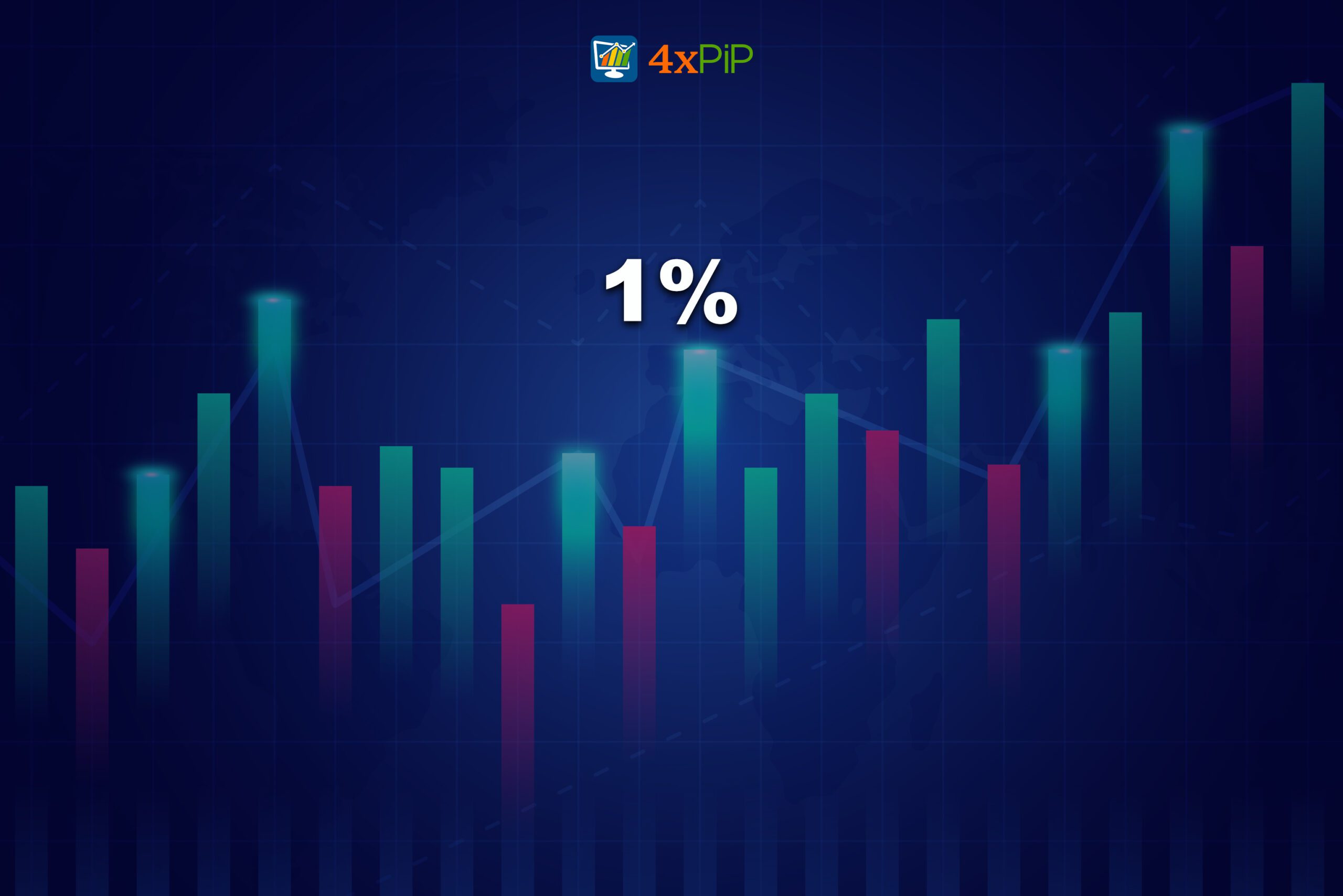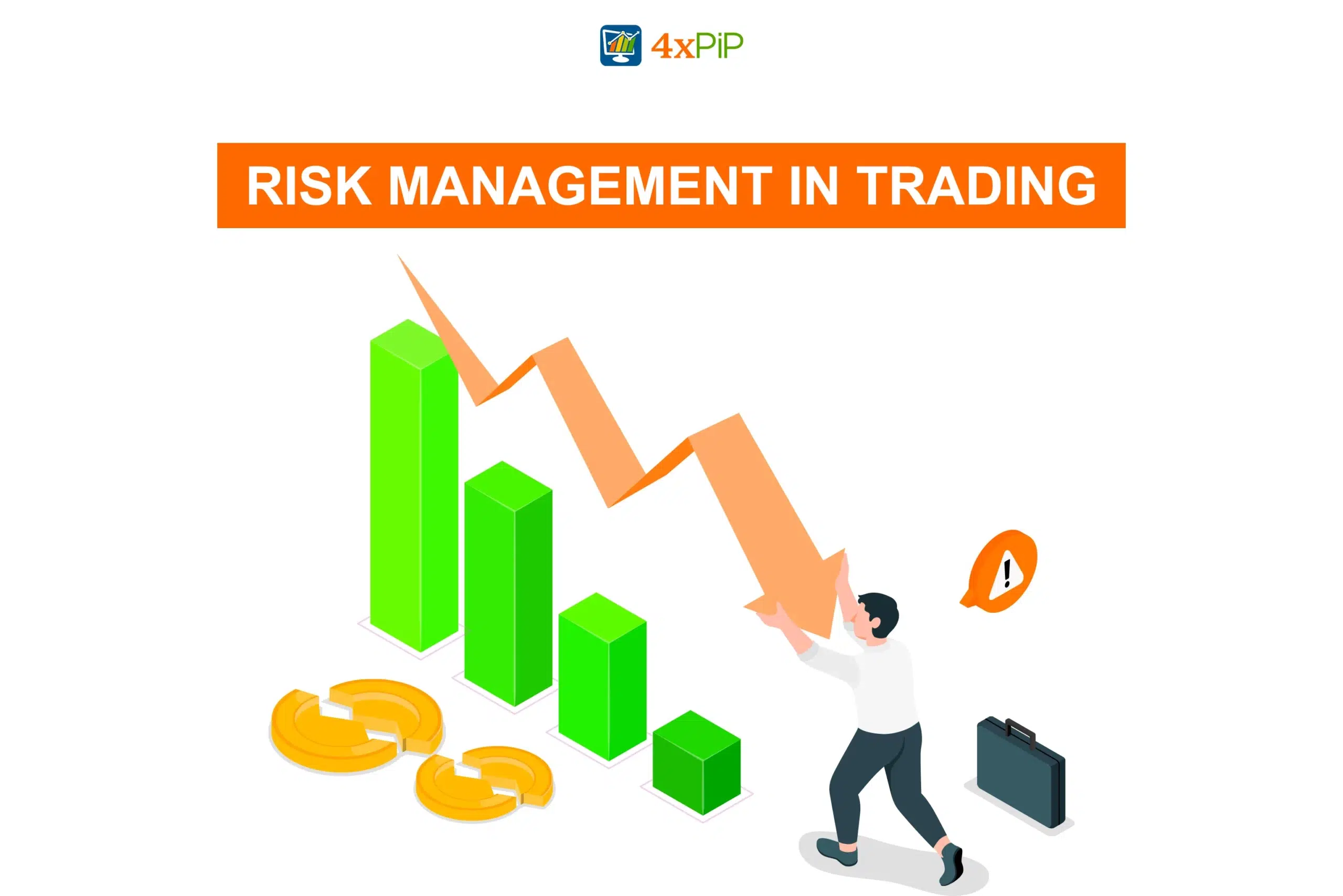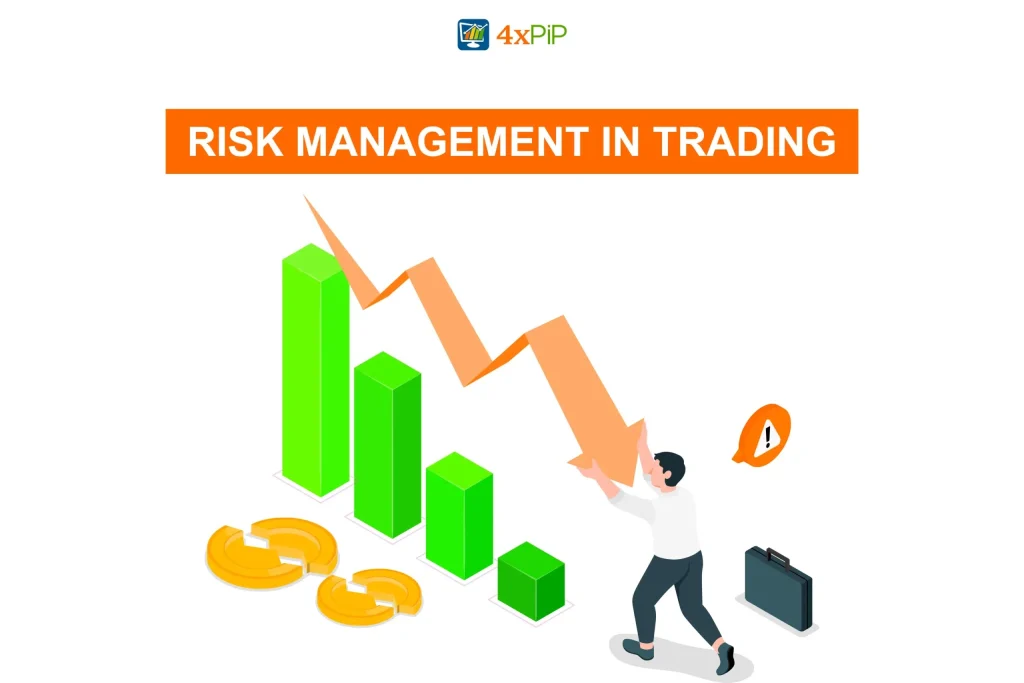In this article, 4xPip is going to provide you with detailed information about risk mitigation strategies traders face while trading. If you are new to trading, read the article till last, and seek trading guidance.
Risk Mitigation Strategies for Traders in Motion:
Risk management is essential for successful trading. It helps traders reduce losses and protect their accounts from ruin. By managing risk, traders can increase their chances of making money in financial markets such as forex, stocks, etc.
Trading can be exciting and rewarding, but it’s important to manage your risk to avoid losing too much money. The best traders use stop orders, profit-taking, and protective puts to limit their losses and protect their profits.
Stop orders are orders to sell a currency pair at a specific price, which can help you limit your losses if its price goes down. Profit-taking is the act of selling a currency pair when it reaches your desired profit target. Protective puts are options contracts that give you the right to sell a currency at a specific price, which can be used to hedge against losses.
By using these and other risk management strategies, traders can increase their chances of success and stay in the game for the long term.
How Do You Evaluate Risk in Trading?
Risks can be assessed using different methods such as:
- Technical analysis: Technical analysis is the study of past price movements and chart patterns in order to predict future price movements. Technical analysts use a variety of indicators and tools to identify potential trading opportunities and to assess risk.
- Fundamental analysis: Fundamental analysis is the study of a company’s financial statements and other financial data in order to assess its intrinsic value. Fundamental analysts use this information to identify undervalued companies and to assess risk.
- Volatility: Volatility is a measure of the fluctuation in the price of an asset. Assets with high volatility are considered to be riskier than assets with low volatility.
- Liquidity: Liquidity is a measure of how easily an asset can be bought or sold. Assets with low liquidity are considered to be riskier than assets with high liquidity.
- Correlation: Correlation is a measure of how two assets move in relation to each other. Two assets that are highly correlated tend to move in the same direction, while two assets that are lowly correlated tend to move in different directions. Traders can use correlation to identify assets that can be used to hedge their risk exposure.
Trade Planning:
Planning is essential for success in both trading and warfare. Sun Tzu’s famous quote, “Every battle is won before it is fought”, emphasizes the importance of planning and strategy. Similarly, traders often quote the phrase, “Plan the trade and trade the plan”.
Before entering a trade, successful traders have a clear understanding of their goals and risk tolerance. They use stop-loss orders to limit their losses and take-profit orders to lock in their profits. This disciplined approach helps them avoid making emotional decisions that can lead to costly mistakes.
Unsuccessful traders, on the other hand, often enter trades without a plan. They may be lured by greed or fear, which can lead to impulsive decisions that result in losses. By carefully planning their trades and sticking to their plan, traders can increase their chances of success.
4xPip is one of the best websites to provide amazing automation of forex trading through Expert Advisors and Indicators along with stop-loss products. You can view the products through these links Stoploss MT4 EA and Stoploss MT5 EA.
You can also contact us and our experts at [email protected] to get more information.
One-Percent Rule:

The one-percent rule is a common risk management strategy for day traders for day trading. It suggests that you should never risk more than 1% of your trading capital on a single trade. This means that if you have a $10,000 trading account, your position size should not exceed $100.
This strategy is especially popular among traders with smaller accounts, but some traders with larger accounts may also use it. As your account balance increases, so too does the size of your position. To keep your losses in check, it is important to keep the rule below 2%.
What are Setting Stop-Loss and Take-Profit Points?
A stop-loss order is a market order to sell a security at a specific price or lower, to limit losses if the price of the security falls below a certain level. For example, a trader might place a stop-loss order one dollar below the purchase price of a stock to limit their loss to one dollar per share.
A take-profit order is a market order to sell a security at a specific price or higher, to lock in profits if the price of the security rises above a certain level. For example, a trader might place a take-profit order two dollars above the purchase price of a stock to lock in a profit of two dollars per share.
Enhancing Stop-Loss Placement for Improved Effectiveness:
Effective stop-loss and take-profit placement in trading involves a mix of technical analysis using moving averages and support/resistance trend lines. Moving averages like the 5-, 9-, 20-, 50-, 100-, and 200-day averages can indicate historical support and resistance levels on a stock’s chart. Support and resistance trend lines, drawn from significant past highs or lows with high trading volume, also play a crucial role. Traders should monitor price reactions at these levels and consider fundamental factors, like upcoming earnings and market sentiment when making trading decisions.
Some key considerations:
- Use longer-term moving averages for volatile stocks to avoid stop-loss triggers from minor price swings.
- Match moving averages with target price ranges; opt for larger averages for longer-term targets.
- Keep stop-loss distances at 1.5 times the current volatility range to prevent premature executions.
- Adjust stop-loss levels based on market volatility; tighten them during stable periods.
- Time trades around key fundamental events like earnings releases for better risk management amid rising volatility and uncertainty.
Expected Return Calculation:

This can be calculated using the following formula:
[(Probability of Gain) x (Take Profit % Gain)] + [(Probability of Loss) x (Stop-Loss % Loss)]
Active traders can use the expected return to determine which stocks to trade. The expected return is calculated by considering the potential profit and loss, which can be estimated using historical data or educated guesses.
Trading Portfolio Protecting Strategies:
To optimize your trading, avoid putting all your money into a single investment, as this can lead to significant losses. Diversify your portfolio across different sectors, market sizes, and geographic regions to manage risk and discover more opportunities. When needed, consider using options to hedge your positions, especially in anticipation of important events, and unwind the hedge when market conditions stabilize.
Active Trading:
Active trading involves buying and selling stocks frequently in an attempt to profit from short-term price movements. Such traders are not investing for the long term; they buy stocks with the intention of selling them for a profit within a short period of time.
Techniques for Trading Risk Mitigation:
Risk management strategies employed by active traders encompass selecting the appropriate broker, thoughtful decision-making, establishing stop-loss and take-profit levels, diversification of trades, and employing hedging techniques.
How to be successful in trading?
Becoming a successful active trader requires:
- Understanding financial markets and price analysis tools.
- Sufficient capital and time management.
- Emotional control.
- A well-defined strategy and adherence to it.
- Diversification of trading positions.
Active trading isn’t easy and isn’t a guaranteed replacement for your day job. Start cautiously, practice with a test account, and carefully consider if it suits your circumstances.
Before executing a trade, investors should have a clear plan for entering and exiting the trade. Using stop-loss orders effectively can help traders minimize losses and avoid exiting trades unnecessarily.
In conclusion, investors should develop a trading plan in advance and keep a journal of their trades to track their progress and identify areas for improvement.
Conclusion:
Risk management is essential for successful trading. It helps traders reduce losses and protect their accounts from ruin. By managing risk, investors can increase their chances of making money in the markets.
Some key risk management strategies include:
- Plan your trades: This includes setting clear goals for each trade, identifying your risk tolerance, and determining your entry and exit points.
- Use stop-loss and take-profit orders: Stop-loss orders limit your losses, while take-profit orders lock in your profits.
- Diversify your portfolio: This means investing in a variety of assets to reduce your overall risk.
- Hedge your positions: Hedging involves taking offsetting positions in order to reduce your risk exposure.
Active trading is a riskier trading that involves buying and selling stocks to get profit from short-term price movements. Active traders can use a variety of risk management strategies, such as those listed above, to mitigate their risk.
For positive trading, it is important to have a good understanding of the financial markets and price analysis tools. You should also have enough capital and time management skills. Emotional control is also essential, as you will need to be able to stick to your trading plan even when things are not going your way.
If you are considering becoming an active trader, it is important to start cautiously and practice with a test account before risking any real money. You should also carefully consider if active trading is suitable for your individual circumstances.












